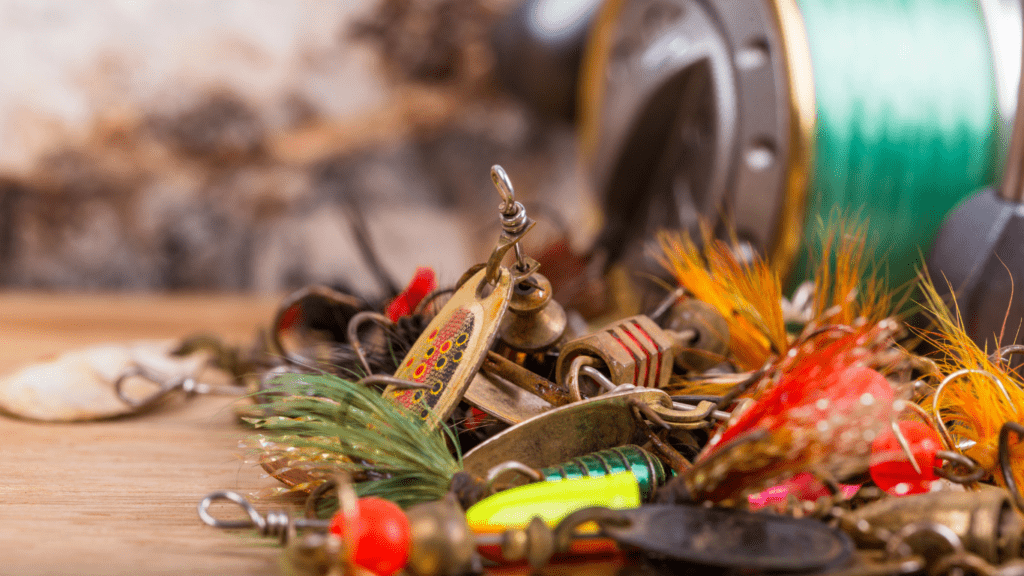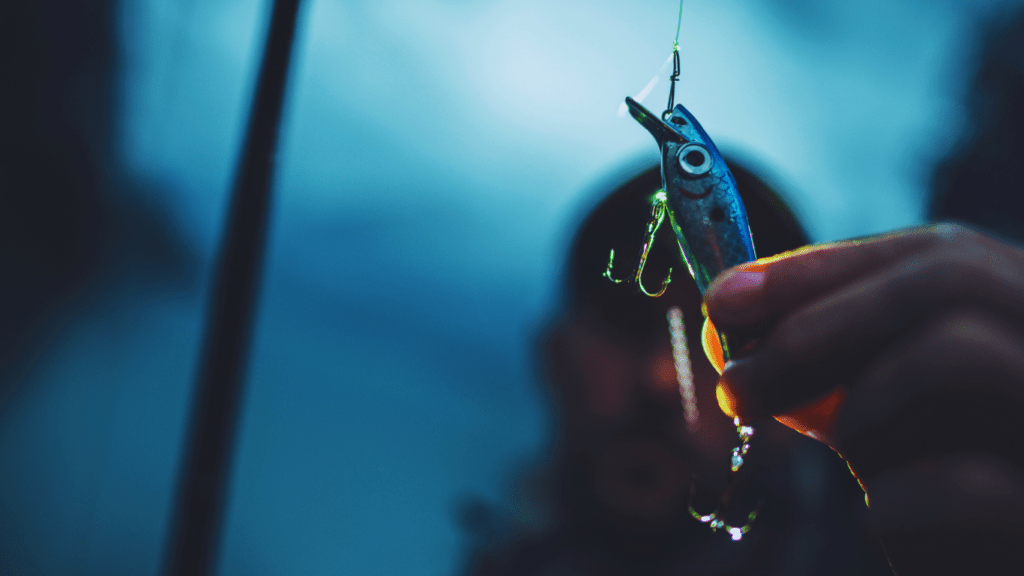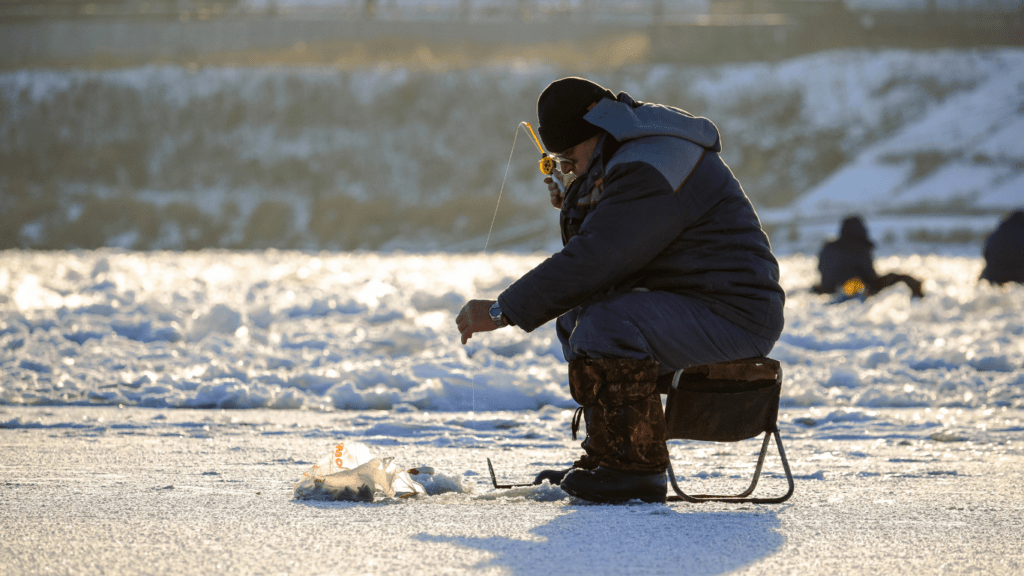Fishing isn’t just about casting a line; it’s about strategy, patience, and making the right choices. One of the biggest decisions anglers face is whether to use bait or lures. Both have their strengths, but picking the right one can be the difference between a successful day on the water and heading home empty-handed.
Understanding Bait And Lures
Fishing relies heavily on selecting the appropriate method to attract fish. Knowing the distinctions between bait and lures helps in making efficient and targeted choices.
What Are Bait And Lures?
Bait includes natural items used to attract fish. It typically consists of live organisms like worms, minnows, or baitfish, as well as cut or prepared pieces like squid or chicken liver. These replicate food sources, making them irresistible to many species.
Lures are artificial tools designed to mimic natural prey or provoke fish through movement, color, or vibration. Made from materials such as plastic, metal, or wood, examples include crankbaits, spinnerbaits, and jigs. Unlike bait, lures are reusable and often tailored to specific fishing techniques.
Key Differences Between Bait And Lures
- Material Origin: Bait comes from natural sources, while lures are man-made.
- Application: Bait is often passive, waiting in the water for fish to bite. Lures are active tools requiring motion to attract fish.
- Maintenance: Natural bait may degrade or attract unwanted species, whereas lures are durable and cleaner to use.
- Target Versatility: Certain bait appeals broadly across species (e.g., worms), but lures can be more specific based on design and action.
- Expense: Bait is typically cheaper upfront but not reusable; lures involve higher initial costs but offer longevity.
Factors To Consider When Choosing
Selecting between bait and lures depends on multiple elements that influence fishing success. I analyze these factors to determine the best choice for specific situations.
Target Fish Species
Understanding the fish species helps in deciding between bait and lures. Predatory species like bass or pike often respond aggressively to lures such as crankbaits or spinners. Non-predatory fish like catfish tend to favor natural bait like worms or cut baits. Species behavior, dietary preferences, and feeding patterns guide my choice. For instance, trout in lakes prefer small, realistic lures, while sea bass often go for live bait like shad.
Fishing Environment
The fishing location shapes whether I use bait or lures. Clear water environments favor lures that mimic natural prey with realistic detail, as fish rely on sight. In contrast, murkier waters often call for bait due to its scent and tactile prompt. Fishing in structured areas like rocky coves may require weedless lures, while open waters might benefit from trolling with flashy lures. Shore fishing, pier casting, and deep-sea environments each demand tailored strategies.
Season And Weather Conditions
Seasonal changes and weather patterns have a major effect on bait and lure effectiveness. During colder months, fish exhibit sluggish behavior, making slow-moving bait more appealing. Warmer seasons increase fish activity, so fast-action lures like spoons or jerkbaits work better. Weather factors such as overcast skies boost the use of lures with vibrant, reflective patterns, while sunny conditions often pair well with subtle, natural bait presentations. Rain commonly pushes fish into covered or shaded areas where bait yields better results.
Advantages And Disadvantages Of Bait

Bait has been a cornerstone of fishing for centuries, offering a natural and effective way to attract fish. Understanding its benefits and challenges helps optimize fishing success based on specific conditions.
Benefits Of Using Bait
1. Natural Attraction
Bait, like worms or minnows, mirrors the fish’s natural diet, creating an irresistible draw for multiple species. For instance, catfish often respond well to nightcrawlers due to their scent.
2. Scent Advantage
Live or cut bait releases a scent trail in the water, making it highly effective in turbid environments. This trait is vital when visibility is low, especially in muddy rivers or during nighttime fishing.
3. Versatility Across Species
Bait appeals to both predatory and non-predatory fish, broadening its usability. A single bait type, such as shrimp, can attract redfish, snapper, or even freshwater bass.
4. Cost-Effective Availability
Bait, particularly collected options like insects or small fish, often incurs low or no cost. Anglers can easily gather natural bait in fishing areas, such as digging for worms in moist soil.
Potential Drawbacks Of Bait
1. Short Shelf Life
Live or organic bait deteriorates quickly, especially in warm weather. For example, minnows perish within hours without proper storage, limiting their usability.
2. Increased Maintenance
Using bait demands added care, such as keeping it alive or preserving freshness. Crickets, for instance, need breathable containers to stay active during a long fishing trip.
3. Selective Effectiveness
Certain bait types work only for specific fish species. Dough balls, while effective for carp, hold limited appeal for game fish like tuna or pike.
4. Messy Handling
Bait handling can be messy and unpleasant due to slime, odors, or blood. Cleaning up after using bait like chicken liver requires significant effort, adding an extra task for anglers.
5. Potential Regulatory Constraints
Laws in some regions restrict certain bait types to prevent ecosystem disruption. For example, using live baitfish might be illegal in areas to avoid introducing invasive species.
Advantages And Disadvantages Of Lures
Lures offer versatility and innovation by mimicking prey species and attracting predatory fish. However, they come with both benefits and potential drawbacks depending on the fishing conditions and techniques used.
Benefits Of Using Lures
- Reusability: I can reuse lures repeatedly without needing to replace them after every catch, saving money in the long term. Unlike bait, lures don’t spoil or degrade quickly.
- Target Precision: Lures enable greater control in targeting predatory fish. For species like bass, their design often replicates preferred prey or incites predatory instincts, improving effectiveness.
- Cleanliness: Handling lures keeps my hands cleaner than using live or cut bait. There’s no need to deal with the mess of organic materials.
- Adaptability Across Conditions: Lures work well in a variety of conditions. Fast-moving lures are effective in warm water, while slower presentations suit colder temperatures.
- Varied Presentation Options: With different shapes, sizes, and colors available, I can adjust lures to match local prey or water transparency, increasing success rates.
- Environmental Considerations: Using lures reduces the introduction of non-native species compared to transporting live bait, especially across ecosystems.
Potential Drawbacks Of Lures
- Higher Initial Cost: Purchasing quality lures can be expensive. Premium lures often cost more than batches of bait, especially when building a collection.
- Learning Curve: Lures require skill to use effectively. For beginners, techniques like jigging, trolling, or casting hard plastics may take time and practice to master.
- Limited Effectiveness for Non-Predatory Fish: Lures are less effective for species that rely on scent or non-visual cues, such as catfish or carp. In such cases, bait usually outperforms.
- Prone to Snags and Loss: In areas with underwater debris or vegetation, lures can get caught easily. Losing expensive lures in such instances can be frustrating.
- Less Effective in Murky Waters: In highly turbid water, lures may be harder for fish to detect unless they include rattles or additional sensory features.
Understanding these factors helps me weigh the practical benefits of lures against their limitations, ensuring the right tool is used for the right fishing situation.
Tips For Maximizing Success
Choosing between bait and lures impacts the outcome of any fishing trip. Tailoring this decision to specific conditions and applying versatile techniques improves success rates.
Matching Your Choice To The Situation
Aligning bait or lure selection with the environment and target species boosts effectiveness. In murky waters, I rely on bait with strong scents, like cut fish or squid, to attract attention. Clear waters demand visually realistic lures, such as crankbaits or soft plastics, that mimic prey movement. Slow-moving bait works best in colder seasons when fish conserve energy, while fast-moving lures excel in warmer months when fish are more active. I also assess the fish species—predatory fish like trout respond to flashy lures, while bottom feeders like carp prefer natural bait.
Experimenting And Adapting Techniques
Variety in strategies improves outcomes when conditions change. When I fish an unfamiliar spot, I switch between bait and lures, testing responsiveness to both. Changing lure colors or shapes helps me identify patterns when fish are selective. Adjusting retrieval speeds, like transitioning from steady to erratic movements, often triggers bites with inactive fish. If bait produces slow results, I try modifying the presentation by suspending it at different depths. Personalizing techniques ensures flexibility, enhancing success despite environmental or behavioral variations.





